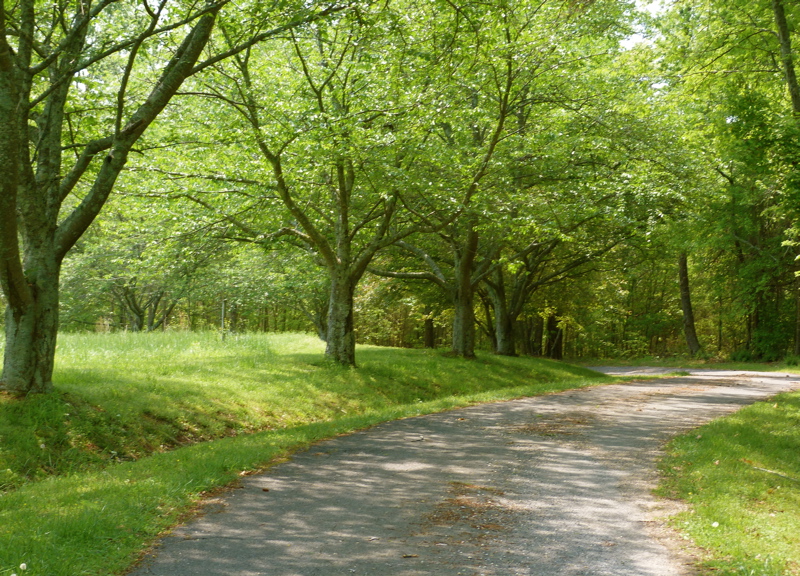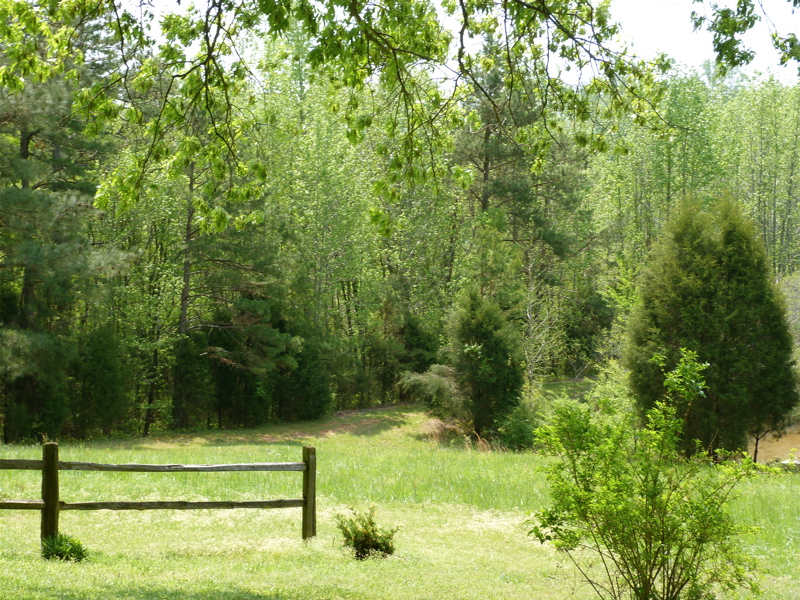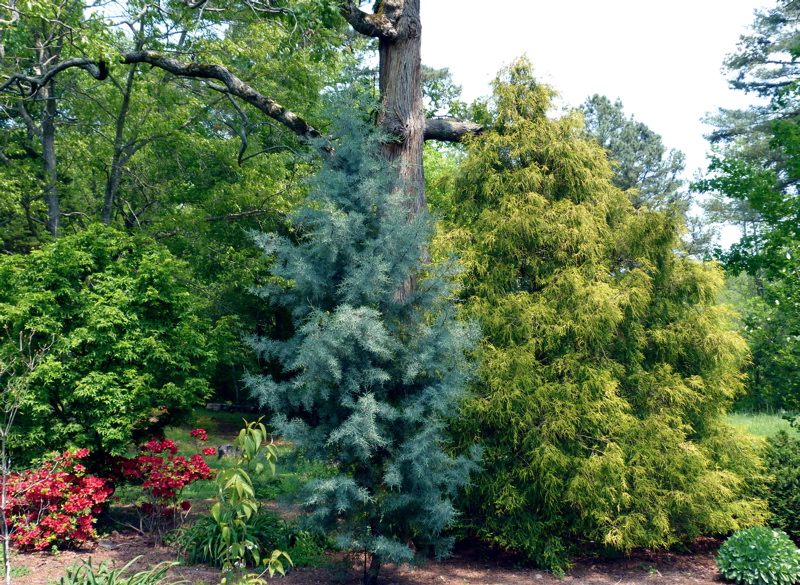Making Friends and Garden Memories
 Friday, April 22, 2011 at 5:00AM
Friday, April 22, 2011 at 5:00AM A few days ago I drove a couple hours up to Scottsboro, Alabama to meet Eve, whom I have corresponded with through her blog, Sunny Side Up. Eve rides a Harley and enjoys gardening and photography. I suspected we would get along well, and I was right. We were like old friends, right away.
We met at John's Native Gardens, a nursery which specializes in native azaleas and also has a wonderful assortment of Japanese maples, ferns, and many other plants. As I turned my car off Highway 79 and drove up a winding country drive, I could tell I was in for a treat.
I looked over rolling fields and a huge pond, and a feeling of peace settled over me.  LaRue Anderson gave us a tour of the gardens. LaRue's husband planted most of the gardens before he passed away some years ago, and now she maintains and adds to it. Eve and I followed her, examining trees and shrubs. The assortment of Japanese maples, conifers, and flowering shrubs is breathtaking.
LaRue Anderson gave us a tour of the gardens. LaRue's husband planted most of the gardens before he passed away some years ago, and now she maintains and adds to it. Eve and I followed her, examining trees and shrubs. The assortment of Japanese maples, conifers, and flowering shrubs is breathtaking. 
When I thought there couldn't be anything more beautiful, we came to a path winding through the woodlands. Delightful fragrance pulled us toward mature stands of native azaleas and rhododendrons, and every turn revealed ever more beautiful blooms. And THEN we came to plants for sale! I brought home two native azaleas and a sweet shrub, as well as a tiny Alabama snow wreath seedling, which LaRue let me dig up for free. This is a plant on my Most Desired list, so I am very grateful.
After leaving the nursery, I followed Eve to her place, where I enjoyed more beautiful gardens, a woodland walk, and two cute doggies. And before I could make it back to my car, Eve was digging up passalong plants for me. And did I mention the sandwich, apple cake, and iced tea? I think most gardeners are nurturing souls who love the soil and have generous hearts, and LaRue and Eve both seem to be like that.
So my life is richer today, with new friends and new plants, and sweet garden memories to dream upon. Thank you, Eve and LaRue!
If you are in the area, give LaRue a call (256-582-4549). She would love to see you!
 Permalink
Permalink